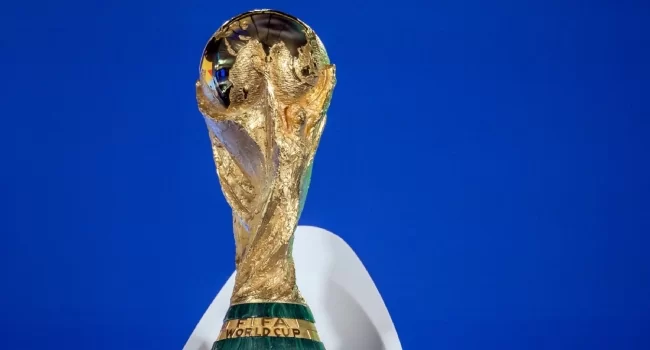Countries Qualified for the 2026 FIFA World Cup

The 2026 FIFA World Cup, set to be hosted across Canada, Mexico, and the United States, marks a historic expansion of the tournament, increasing the number of participating teams from 32 to 48. This change opens the door for more nations to compete on the global stage, offering a broader representation of football talent worldwide. As of June 13, 2025, 13 countries have secured their spots in the tournament, with qualification rounds still ongoing across various confederations. Below is a detailed overview of the nations that have qualified so far and the context of their qualification.
Qualified Teams
North America (CONCACAF)
The three host nations automatically qualify for the 2026 World Cup, as per FIFA tradition. These countries are:
- Canada: Hosting their second World Cup (after the 1986 Women’s U-20 Championship), Canada earned their automatic berth as co-hosts. The Canadian men’s national team, which made a return to the World Cup in 2022 after a 36-year absence, will look to build on their experience and perform strongly on home soil.
- Mexico: A perennial World Cup participant, Mexico secures their spot as co-hosts. Having appeared in every tournament since 1994, El Tri will aim to advance beyond their consistent Round of 16 exits, leveraging the advantage of playing in familiar stadiums.
- United States: The U.S., hosting their second men’s World Cup since 1994, qualifies automatically. With a young and talented squad, including players competing in top European leagues, the USMNT is poised to make a significant impact in 2026.
Asia (AFC)
The Asian Football Confederation has been allocated eight direct slots for the 2026 World Cup, with the possibility of a ninth via an intercontinental playoff. Six teams from Asia have already clinched their places:
- Australia: The Socceroos, a regular presence in recent World Cups, qualified through the AFC’s rigorous qualification process. Known for their resilience, Australia will aim to progress beyond the group stage, as they did in 2022.
- Iran: Team Melli, a powerhouse in Asian football, secured their spot with strong performances in the qualifiers. Iran’s disciplined and tactical approach makes them a formidable opponent, as seen in their competitive showings in past tournaments.
- Japan: The Samurai Blue, one of Asia’s most consistent teams, qualified comfortably. With a squad boasting players from top European clubs, Japan is expected to challenge for a deep run in 2026, building on their Round of 16 appearance in 2022.
- Jordan: A surprise qualifier, Jordan’s rise in Asian football culminated in their World Cup berth. Their qualification marks a historic moment for the nation, which will make its debut on the global stage.
- South Korea: Led by stars like Son Heung-min, South Korea qualified with ease. A mainstay in World Cup competitions since 1986, the Taegeuk Warriors will aim to replicate or surpass their iconic semi-final run from 2002.
- Uzbekistan: Another first-time qualifier, Uzbekistan’s emergence reflects the growing competitiveness of Central Asian football. Their qualification is a testament to the country’s investment in developing young talent.
Oceania (OFC)
The Oceania Football Confederation has been granted one direct slot for the 2026 World Cup, a significant milestone for the region.
- New Zealand: The All Whites secured Oceania’s sole guaranteed spot. Having previously appeared in 1982 and 2010, New Zealand will look to make an impact in a tournament that offers more opportunities for smaller confederations.
South America (CONMEBOL)
South America has been allocated six direct slots, with a seventh potentially available through an intercontinental playoff. Three teams have already qualified:
- Argentina: The reigning 2022 World Cup champions, led by Lionel Messi, secured their place with dominant performances in the CONMEBOL qualifiers. La Albiceleste will enter 2026 as one of the favorites to lift the trophy again.
- Brazil: The five-time world champions qualified despite a challenging campaign. With a wealth of talent, including stars like Vinícius Jr., Brazil remains a perennial contender for the title.
- Ecuador: A rising force in South American football, Ecuador clinched their spot with consistent performances. Their young and dynamic squad, showcased in 2022, positions them as a potential dark horse.
Qualification Process and Remaining Spots
The 2026 World Cup’s expanded format includes 48 teams, with the following allocation across confederations:
- AFC (Asia): 8 direct slots + 1 playoff
- CAF (Africa): 9 direct slots + 1 playoff
- CONCACAF (North, Central America, Caribbean): 6 direct slots (3 for hosts) + 2 playoffs
- CONMEBOL (South America): 6 direct slots + 1 playoff
- OFC (Oceania): 1 direct slot + 1 playoff
- UEFA (Europe): 16 direct slots
As of now, 35 slots remain open, with qualification campaigns continuing globally. In Europe, UEFA’s qualification process is underway, with powerhouses like France, Germany, and Spain expected to secure spots. In Africa, CAF’s expanded allocation of nine direct slots has intensified competition, with nations like Nigeria, Senegal, and Morocco vying for qualification. CONCACAF’s remaining three direct slots and two playoff berths will see intense battles among teams like Costa Rica, Jamaica, and Panama.
The intercontinental playoffs, involving six teams from various confederations, will determine the final four participants, adding an extra layer of drama to the qualification process.
Looking Ahead
The 2026 FIFA World Cup promises to be a landmark event, not only due to its expanded format but also because it will be the first tournament hosted across three nations. The 13 qualified teams—Canada, Mexico, United States, Australia, Iran, Japan, Jordan, South Korea, Uzbekistan, New Zealand, Argentina, Brazil, and Ecuador—represent a mix of traditional powerhouses, emerging nations, and first-time qualifiers. As the qualification rounds progress, the global football community eagerly awaits the full lineup of teams that will compete for the coveted trophy in June and July 2026.
For the latest updates on World Cup qualification, fans can follow FIFA’s official channels or check regional confederation websites for detailed schedules and results. The road to 2026 is well underway, and the stage is set for an unforgettable tournament.





